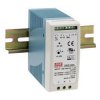daurtanyn
Member
All good thoughts and comments, RAL.
Since I already have the power supply, the new cost for me is the OpenUPS and the fuse block. Both total about $150. The ebay option you found was gone by the time I read your post. Another was available for about $80. So, in cost, the Altronix AL600ULPD4 is a clear winner, especially used.
Still, I have a history of paying premiums for a long tail payback and operational versatility. The OpenUPS can be configured to appropriatly charge several battery technologies. SLA being the default, of course. It can also charge and monitor six cells at once.
The tossup, in my mind, is the Li Iron Phosphate battery vs the Sealed Lead Acid battery. I have found another, cheaper, source than the one I posted, from WholesaleBatteries. It's still four times more than the SLA battery you suggested, but it should last 4 times longer AND it doesn't have issues with being fully discharged.
All food for thought.
Since I already have the power supply, the new cost for me is the OpenUPS and the fuse block. Both total about $150. The ebay option you found was gone by the time I read your post. Another was available for about $80. So, in cost, the Altronix AL600ULPD4 is a clear winner, especially used.
Still, I have a history of paying premiums for a long tail payback and operational versatility. The OpenUPS can be configured to appropriatly charge several battery technologies. SLA being the default, of course. It can also charge and monitor six cells at once.
The tossup, in my mind, is the Li Iron Phosphate battery vs the Sealed Lead Acid battery. I have found another, cheaper, source than the one I posted, from WholesaleBatteries. It's still four times more than the SLA battery you suggested, but it should last 4 times longer AND it doesn't have issues with being fully discharged.
All food for thought.




